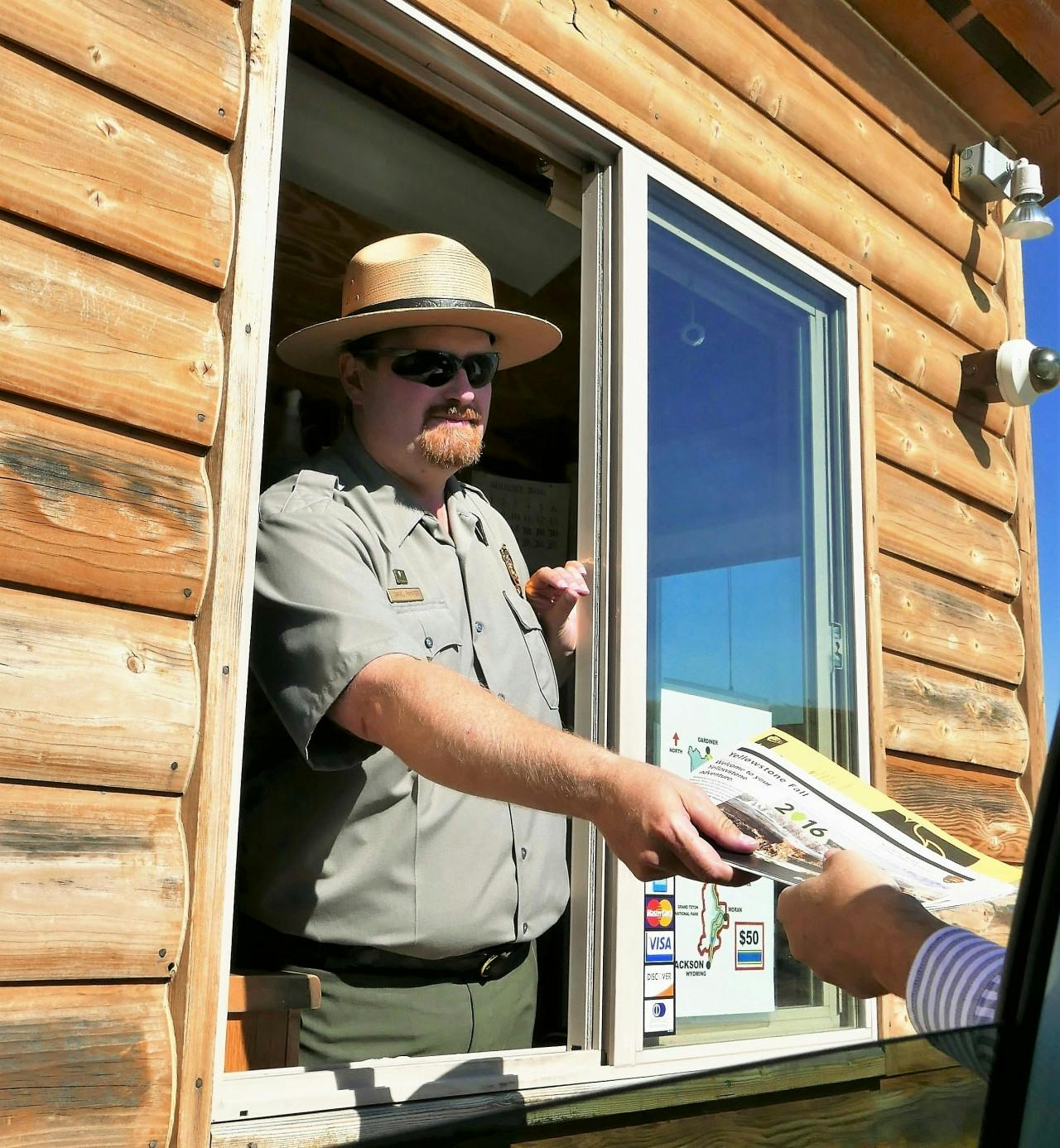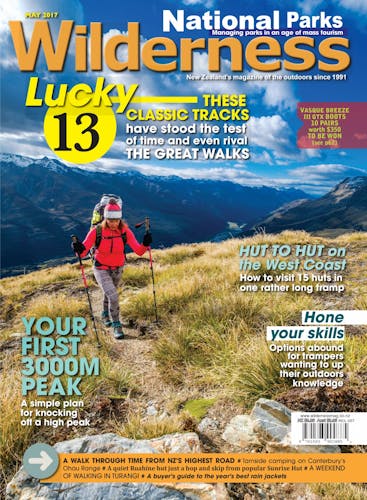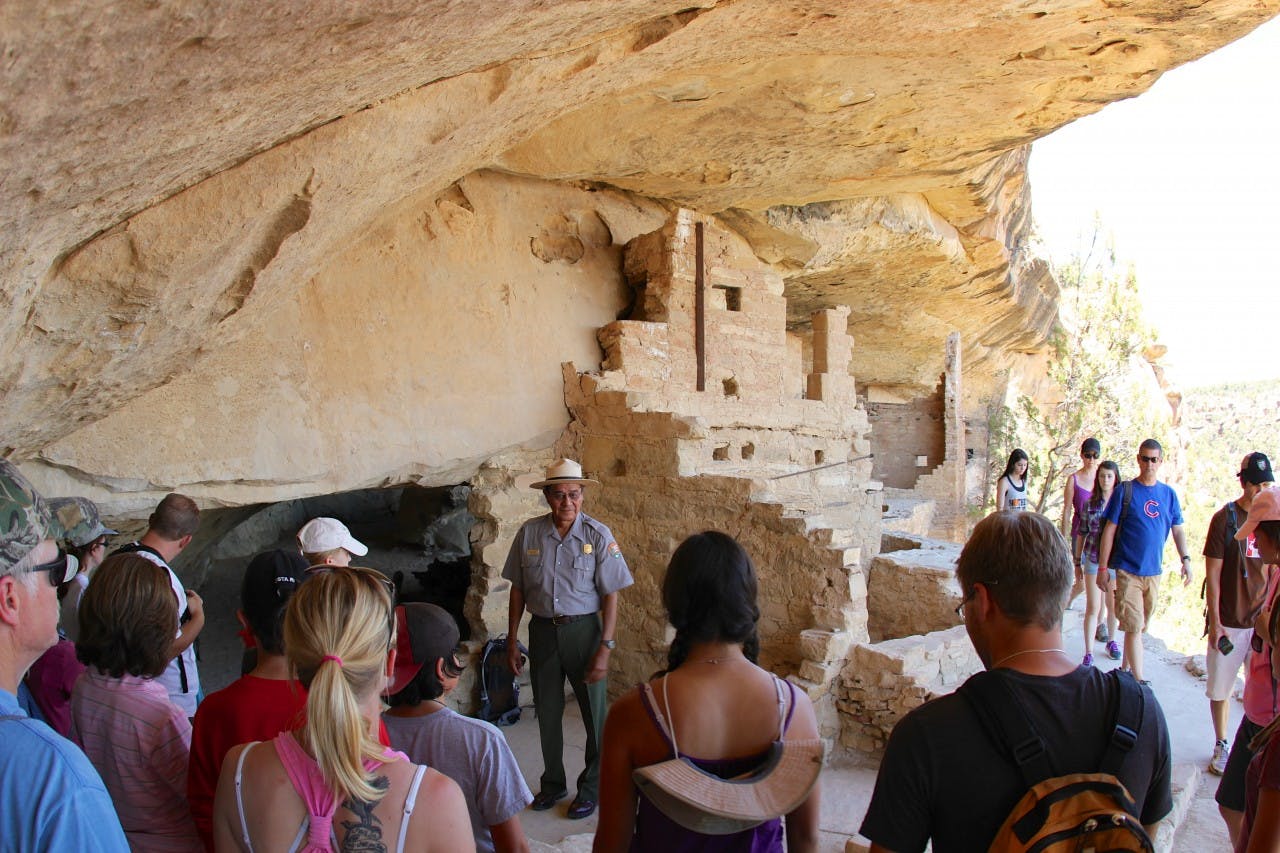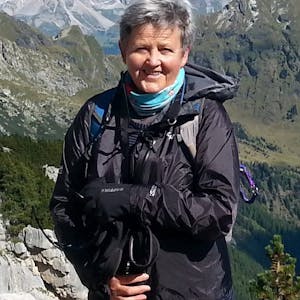As burgeoning tourism puts pressures on our conservation estate, Kathy Ombler compares visitor services in US national parks to New Zealand, and looks at what options DOC might consider to manage pressure points and infrastructure funding
In the visitor centre at Swiftcurrent, Glacier National Park, I watched a ranger issuing backcountry campsite passes to two city girls. The ranger launched into a dissertation: on health and safety (drinking water, bears, moose, hypothermia) and environmental concerns (rubbish, fires, sanitation). Comprehension questions followed, and only after the ranger was satisfied the girls understood, clearly, all the rules and ramifications of noncompliance were they given their campsite pass.
Was he so thorough because the girls were young and on their first park camping trip, I asked after they left? No, that’s the normal education and safety process for all campers, he said. He also confirmed that camping in the park is permitted only in designated sites, for a fee, must be pre-booked, and numbers are restricted. At peak times, minimum night stays are enforced at busy sites.
I was at the visitor centre for the evening ranger talk on wildlife encounters. This was topical, given my heart-stopping ‘encounters’ with two grizzly bears and a massive bull moose on a trail the day before. Advice about avoiding bears, particularly active in the autumn as they stocked up on berries for hibernation, was helpful, as was the chance to practise with a can of bear spray. Being told that moose are mad and unpredictable was not so reassuring.
Ranger talks – be they on animals, astronomy, forest flowers, beavers, birds, cultural history, glacial retreat, or whatever – continue daily throughout summer and autumn at all the park’s key entry areas. As do daily guided walks, and park shuttles to the ‘trailheads’. All this is included in the park entry fee.
Our group of four shared an annual vehicle pass, US$80, which included all passengers and covered all US national parks. (To compare, a one-day vehicle pass was $20). We visited multiple entry points in four national parks, at each entry we showed our pass and were given maps and guides for park tracks and features in that region.
It was obvious, in these parks at least, how the road system had been set up with entry fees in mind, unlike the jumble of road ends and often remote entry points at New Zealand parks. And of course, in the US (and many other countries) there is no freedom of entry into national parks legislation that we hold so dear.
DOC, charged with protecting one third of our country, shouldn’t have to be
scratching for new revenue options and developing ‘tourism products’ to fund itself
One day, in Glacier National Park, we joined a guided walk with Ranger Renee, who alley-ooped her way loudly up the track to “let the bears know we’re here”. As we walked, Renee pointed out deer, mountain sheep, marmots, moose and bears, discussed the geology of this immense glaciated landscape and explained how, sadly, it’s now losing its many glaciers to global warming. We learned a lot, while others with us said they wouldn’t even have attempted the challenging climb without a guide.
In New Zealand, apart from the advice dispensed from park visitor centres, park users are left to their own devices. Unless they book with a commercially guided operation, a model encouraged by some, including inside DOC, as appropriate for generating funding through concessionaire fees and for providing employment.
We’ll get to funding soon, but should DOC be doing more, like the US Park Service, in terms of educating and guiding its visitors?
Crystal Brindle is a US park ranger, with university qualifications in parks and protected areas management. Her parents were also park rangers. She loves New Zealand, and for the past three summers has worked as a DOC hut warden.
Interpretation, she believes, is one area where we could improve. “There are established standards and incredible resources available for interpretation within the US National Park Service that are not mirrored within DOC. I would love to see the ‘Interpretive Park Ranger’ in New Zealand, taking into account Kiwi culture and park usage. The US National Park Service has a great framework to learn from.”
Dave Bamford, conservation and tourism consultant, agrees. “We need more DOC staff out there, on the tracks, talking to people, and of course for more staff we need more funding.

Visitors to US national parks pay a fee to enter – something that would require a legislative change in New Zealand. Photo: Kathy Ombler
“Offering more interpretation would give the department an increased professional face-to-face presence with visitors. This would give visitors a greater sense of involvement with the park and with nature. It would help them understand the values, become kaitiaki (guardians) in areas that are important to them, and build their support for better resources for our protected areas. More contact and education would also help with visitor safety,” he adds.
“This isn’t just about international visitors, but also New Zealanders who will appreciate our protected areas even more when they learn about and understand their values.”
On the plus side, Brindle says our hut system is second to none. “Huts, cabins or other structures are not expected nor encouraged in US national parks. In contrast, backcountry huts are a part of New Zealand tramping culture. Similarly, the Great Walks are something quite different from anything found in the US.
“Encouraging many Kiwi and foreigners to see a larger chunk of natural New Zealand than they might have by selecting tracks around the country for Great Walk classification is an interesting concept for any country to consider.”
Yes, she is surprised we don’t charge park entry fees, especially with the current talk of underfunding, but says it’s not for her to make a call on that. Happily, she considers we also have “better cohesiveness” around saving endemic species (our current high rate of species decline notwithstanding). “I think DOC has made endemic species restoration its own, this strengthens the organisation and its public perception.”
DOC, then, balancing both visitor and conservation management, but under pressure.
Crowds cramming onto popular tracks and into ever-expanding car parks. Inadequate toilet facilities, fully booked Great Walks. Tourism marketing continuing, unabated. Is this sustainable, is it protecting our national parks in perpetuity? Is there anything else we can take from the US model that would help management in our parks, in this our time of apparent need?
Hugh Logan thinks yes, and it’s not about charging entry fees. In 2009, Logan took a study tour of US and Canadian national parks during his tenure as DOC director general, and says we can learn from how they responded to similar tourism pressures, several decades ago.
“The response took time and it was controversial,” Logan says. “Tourism lobby groups were extremely powerful and there was big money involved. Banff National Park was threatened with losing its World Heritage status because of tourism pressures.
“The lessons we can learn are that US and Canada changed to become more active in managing both visitors and tourism concessionaires. They have staff on the ground, being firm with visitors but doing it with a smile. If you don’t camp in designated areas, park rangers can hand out instant fines. Concession conditions are tough and if a concessionaire doesn’t toe the line, their concession is pulled.
“Even the major concessionaires, the big park lodges for example, only have an eight-year concession then they have to reapply. Their whole business relies on a strong working relationship with the park service, if they don’t follow the rules, they’re gone.
“In New Zealand, by and large, it was felt clever asset management would cope with crowding. And because the tourism industry has been so important there has been a somewhat softly softly approach so as not to hinder business development.
“Things have changed and a more active approach is required. This means being firmer with tourists and being tougher on concessionaires.”
To be fair, many DOC tourism concessionaires are strong protagonists for our parks. They get involved in conservation work, educate their guests about our natural heritage and values, understand the symbiotic relationship their business has with conservation and contribute funding through concession fees.

US park rangers patrol parks, checking permits and ensuring no freeloaders. Photo: Daniel Hoherd/Creative Commons
Nevertheless, there was recent umbrage, and accusations of self-interest, when a big foursome of tourism companies suggested we privatise our Great Walks. This was in the McKinsey Report, commissioned by Air New Zealand, Christchurch and Auckland Airports and Tourism Holdings, to consider funding and management options for our tourism growth. The report’s idea of establishing a tourism development fund, made up from a border tax and matched by the current GST tourism take, was somewhat better received.
Government has promised to consider and respond to the McKinsey Report, though no timetable has been indicated. Meanwhile, DOC recreation manager, Gavin Walker, says government has asked DOC and MBIE to investigate systems to increase revenue that would work for both conservation and the tourism industry. Again, there is no apparent deadline.
In the media, DOC director general Lou Sanson has been prolific with ideas: differential pricing for Great Walks, for example, quoting British Colombia and South American systems where international visitors pay higher rates than locals. He has also talked of charging fees for national park ‘pressure points’ which have single road access, such as Milford Sound, the glaciers and Aoraki/Mt Cook, albeit it with a stated preference to charge for facilities and services rather than access (which would require legislative change).
Walker says other potential management strategies include more pre-booking of huts (some but not all), restricting numbers on popular tracks (achieved by managing transport concessionaires) and managing the spill over from Great Walks by developing further walks.
Funding questions notwithstanding, Walker talks of plans for more development to cater for the increasing number of both international and Kiwi visitors to the DOC estate.
Sounding distinctly celebratory, he says we’ve been really successful both as a country and a conservation agency. “We’ve had a focus over the past 10 to 15 years to connect more people with natural places, to get both New Zealanders and our international visitors to spend more time in the outdoors to appreciate these places.”
Things have changed and a more active approach is required.
This means being firmer with tourists and being tougher on concessionaires
He talks of developing added capacity with particular energy into regions such as Northland and the West Coast. “These regions say they want more tourism and they have areas of conservation land that could support more use.”
The new Great Walk, Paparoa/Pike29 Memorial Track, is one obvious example. There is also DOC’s controversial ‘life size moa and light show’ proposal to draw people to Karamea’s Oparara Arches.
Let’s be honest, we are currently in reaction mode, says Walker. “We want to look at the long term future, consider where people want growth, then set those areas up. There is a whole range of options being explored.”
Enough already, says Dave Bamford. “There are so many suggestions floating around. Let’s stop talking and start managing. DOC, charged with protecting our most special natural resources across one third of our country, shouldn’t have to be scratching for new revenue options and developing ‘tourism products’ to fund itself.
“The government of the day needs to show long-term strategic leadership and develop an overarching funding model. The GST take on tourism (now exceeding a massive $2billion a year!) should be part of this funding mix.”








